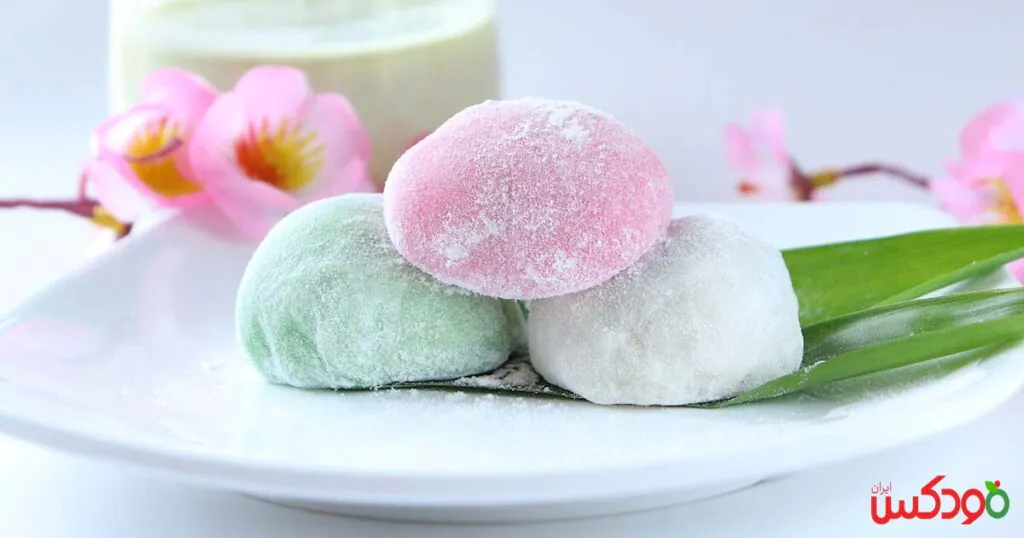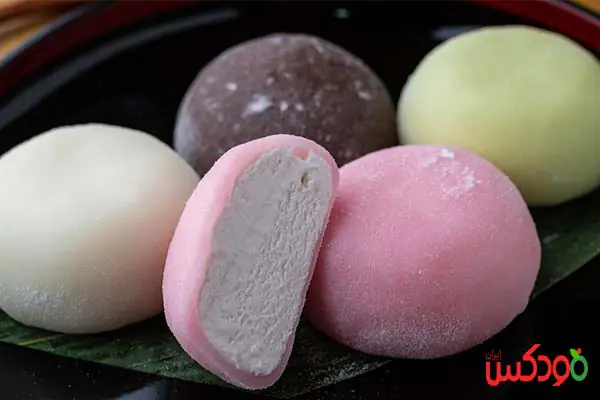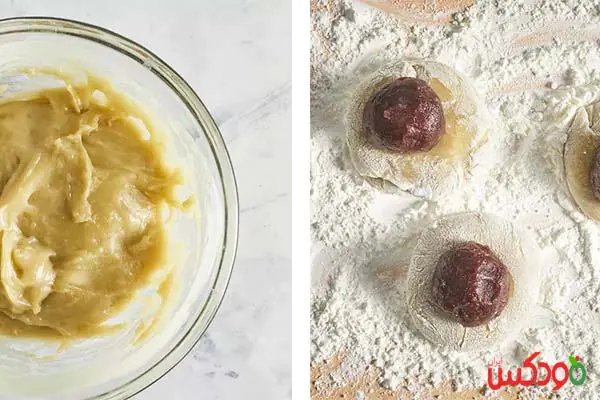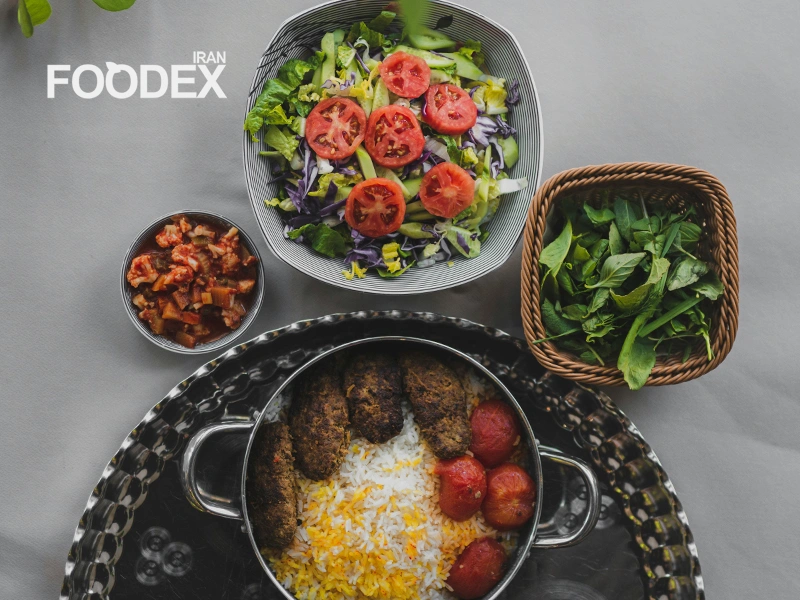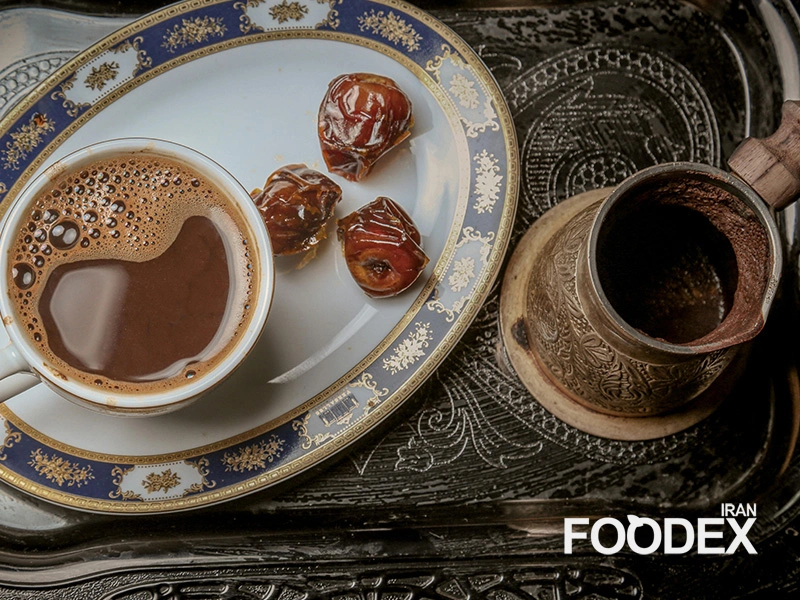Sweets and desserts vary widely across cultures, and mochi is one of these delightful treats. You may have tasted mochi or at least seen it in Japanese and Korean movies.
Mochi is a traditional Japanese sweet that represents an aspect of the country’s culture. Made from sweet rice flour, it is considered akin to rice in terms of its cultural and culinary significance. Join us in this Foodexiran article to explore what mochi is and learn how to make it at home.
What is Mochi?
Mochi is a Japanese dessert made from sticky and sweet rice flour. To create vibrant colors, matcha green tea powder or food coloring is often added to the mochi dough. The dough typically surrounds a sweet filling, resulting in bite-sized treats.
Traditionally, mochi was filled with sweet bean paste, but modern variations include flavors like chocolate, vanilla, and ice cream.
The Most Delicious and Famous Sweets in the World
Read the ArticleThe Story of Mochi
The history of mochi dates back to ancient Japan, around 300 BC during the Yayoi period, when the practice of pounding rice into sticky dough became common. At the time, mochi was used in religious ceremonies and festivals.
In ancient Japan, mochi was considered the food of the gods and played a significant role in celebrations like the Japanese New Year (Oshogatsu). During these celebrations, families would gather to steam rice and pound it in a large mortar to create mochi. The pounding process was often accompanied by cheerful songs, symbolizing unity and prosperity for the coming year. Mochi is deeply rooted in Japanese culture and is regarded as an art form in culinary traditions.
Nutritional Value of Mochi
Now that we understand what mochi is, let’s take a look at its nutritional value. The term “DV” in the table below refers to “Daily Value,” indicating the recommended daily intake of a nutrient. Here’s the nutritional breakdown of 100 grams of mochi:
| Nutrient | Amount |
|---|---|
| Energy | 363 kcal |
| Total Fat | 10 g (13% DV) |
| Carbohydrates | 63.33 g (23% DV) |
| Fiber | 3.30 g (12% DV) |
| Sugar | 36.67 g |
| Protein | 6.67 g (13% DV) |
| Sodium | 50 mg (2% DV) |
Ingredients for Making Mochi
The ingredients needed to prepare mochi are relatively easy to find. The quantities below make approximately eight pieces of mochi:
| Ingredient | Quantity |
|---|---|
| Sweet rice flour | 1 cup |
| Water | 1 cup |
| Sugar | 1/4 cup |
| Matcha green tea powder | 1 teaspoon |
| Cornstarch | 1/2 cup |
| Filling (e.g., ice cream, chocolate, fruit) | As needed |
How to Make Mochi
One of the appealing features of mochi is its simplicity, making it easy to prepare at home. Here’s a step-by-step guide to making Japanese mochi:
- Mix the Dry Ingredients: Combine the sweet rice flour and matcha green tea powder in a microwave-safe bowl.
- Prepare the Liquid Mixture: In a separate bowl, mix water and sugar until the sugar dissolves. Add this mixture to the flour and matcha, and mix thoroughly.
- Microwave the Dough: Microwave the mixture for 3 minutes and 30 seconds. Once done, remove the dough from the microwave.
- Prepare the Work Surface: Sprinkle cornstarch on a clean surface and transfer the dough onto it. Knead the dough slightly and divide it into portions (about 2 tablespoons each), shaping them into balls.
-
- Fill the Mochi: Flatten each dough ball slightly and place a filling (e.g., fruit, chocolate, or ice cream) in the center. Fold the edges over to seal the filling, creating a smooth, round shape.
- Finish with Cornstarch: Sprinkle the mochi with cornstarch and place them seam-side down on parchment paper. Repeat the process with the remaining dough.
Your mochi is now ready to serve. Enjoy!
Recipe for Homemade and Delicious Muffins
Read the Article
Important Tips for Making Mochi
- Using matcha powder is optional. You can omit it if desired.
- If you don’t have a microwave, you can steam the dough for 15 minutes instead. Place a colander or mesh over boiling water and arrange the dough pieces to steam.
- For colorful mochi, add a few drops of food coloring to the dough.
- To make traditional mochi, use 1 cup of sweetened red bean paste as filling. Chill the paste in aluminum foil in the freezer for an hour before shaping it into balls for the mochi center.
- If using ice cream as filling, freeze the prepared mochi briefly to help it set.
- You can decorate mochi with sprinkles, shredded coconut, or melted chocolate for added appeal.
How to Make Simple Homemade Ice Cream
Read the ArticleCalorie Content of Mochi
Every 100 grams of mochi contains 363 calories. The weight of your prepared mochi will determine how many pieces equal 100 grams. If you are on a specific diet, pay attention to its calorie content. To enjoy mochi without exceeding your calorie limit, consider adjusting the calories in other meals during the day.
How to Make No-Bake Cheesecake at Home
Read the ArticleMochi: A Delicious and Easy Dessert
In this article, we introduced you to the Japanese mochi and its simple preparation method. Mochi’s versatility allows for countless variations, such as chocolate, pistachio, or fruit-flavored versions. It can be served as a dessert or a tasty snack.
The appealing appearance of mochi often makes it a favorite among children. Try making mochi at home and enjoy this delightful treat with family and friends at your next gathering.
Frequently Asked Questions About Mochi
What is mochi?
Mochi is a Japanese dessert made from sweet and sticky rice flour. It often contains fillings like ice cream, chocolate, or fruit and is beloved worldwide for its soft texture and delightful flavors.
What ingredients are needed to make mochi?
The main ingredients are sweet rice flour, water, sugar, cornstarch, and fillings such as ice cream, chocolate, or fruit. Matcha powder or food coloring can be added for additional flavor and appearance.
Can mochi be made without a microwave?
Yes, you can steam the dough for 15 minutes instead. Place it over boiling water on a mesh or colander.
How can mochi be made colorful?
Add a few drops of food coloring or matcha green tea powder to the dough to make it colorful.
Is mochi only prepared in the traditional Japanese way?
No, in addition to the classic version, modern variations include flavors like chocolate, pistachio, or fruit, allowing for creativity based on personal taste.

